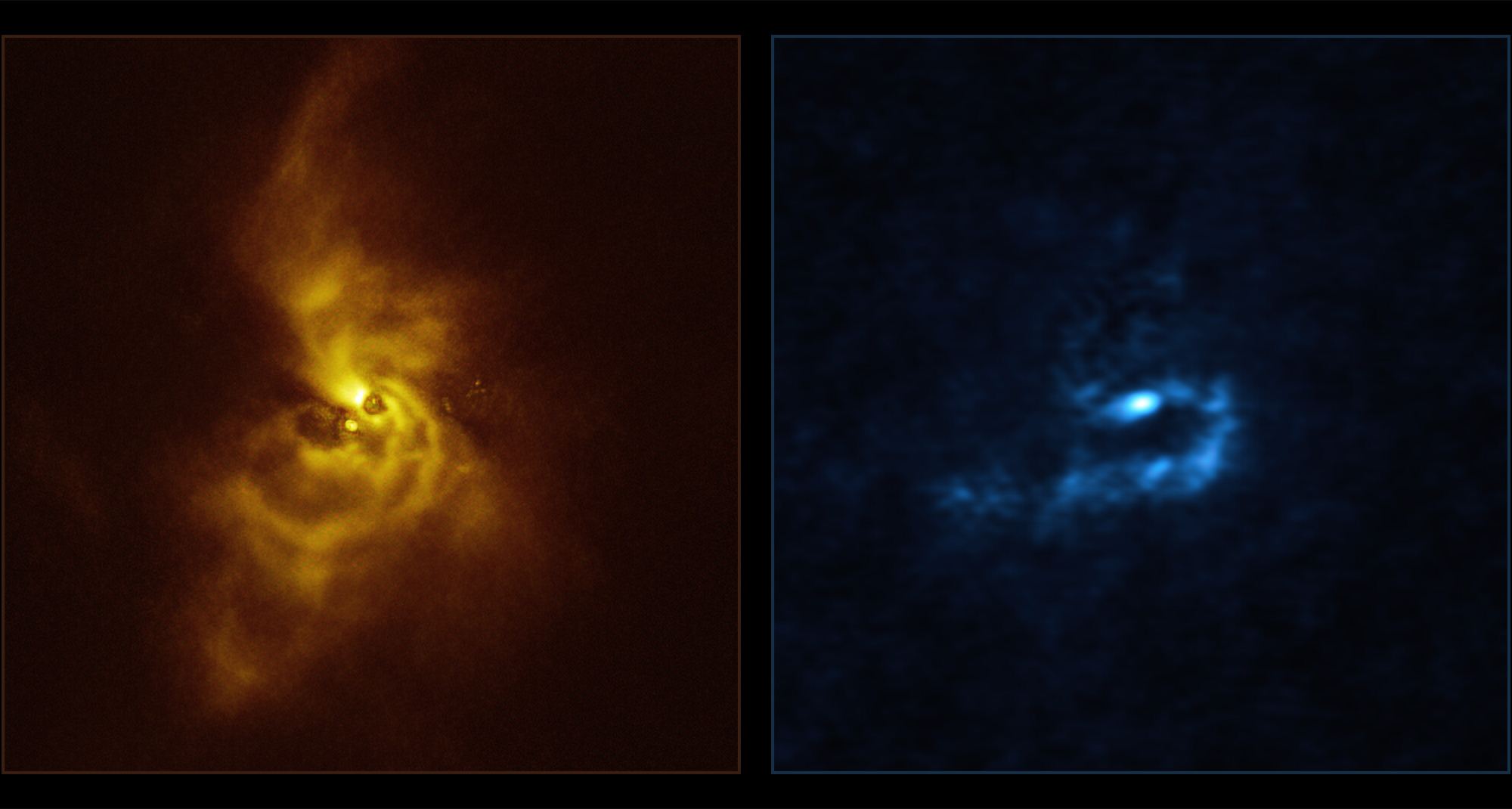From the dust, we rise. Vortices within the disks of young stars bring forth planets that coalesce into worlds. At least that’s our understanding of planetary evolution, and new images from the Atacama Large Millimeter/submillimeter Array (ALMA) and the Very Large Telescope’s Spectro-Polarimetric High-contrast Exoplanet REsearch (SPHERE) further support this.
We know that most stars have planetary systems and that these systems form with their star via protoplanetary disks. But there are still plenty of smaller details we don’t fully understand. What causes the initial clumping of material from which planets grow, and how do planets clear the debris of a disk to become a fully-fledged planetary system?
Studying the early period of a star system is difficult because the same gas and dust that forms planets also obscure them from view. But in recent years advanced infrared and radio observatories have yielded high-resolution images of many young stars. We can now see large protoplanets in many of these disks and gaps where planets have cleared debris. Now observations of a young star 5,000 light-years away have given us a glimpse of the earliest moments of planetary formation.
The star is known as V960 Mon, and it attracted the attention of astronomers in 2014 after it suddenly brightened by a factor of 20. This outburst showed that the star’s protoplanetary disk had intricate spiral arms. Astronomers are still not entirely sure how these spirals form, but they seem to be connected to early planet formation. So a team of astronomers wanted to take a closer look.

There are two broad models of planetary formation. The first model argues that planets form gradually through what is known as core accretion. Small clumps form within a debris disk, which grows over time as it captures nearby material. The second model argues that the seeds of planets form quickly through gravitational instabilities within the disk. Astronomers have found evidence of core accretion in some disks, but most of the young planets we’ve observed are already sizable, suggesting the latter model.
In this new study, the team found evidence of a nearby star that is triggering gravitational clumps within the spiral arms of V960 Mon. This suggests that planetary cores can form quickly within a spiral arm due to gravitational perturbations. It is the first strong evidence in support of the gravitational instability model.
We still do not know if one or both models play significant roles in planetary formation, but it is clear the process can be complex. It is clear that change can happen quickly, so it will be important to look for transient brightening among young stars to better understand the process. As new observatories such as the Vera Rubin Telescope come online, astronomers will be able to see how planets rise from the spiral arms of stars.
Reference: Philipp Weber et al. “Spirals and Clumps in V960 Mon: Signs of Planet Formation via Gravitational Instability around an FU Ori Star?” The Astrophysical Journal Letters 952 (2023): L17.

